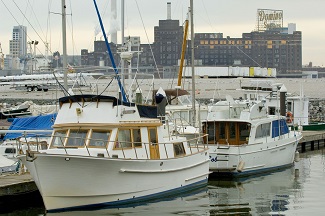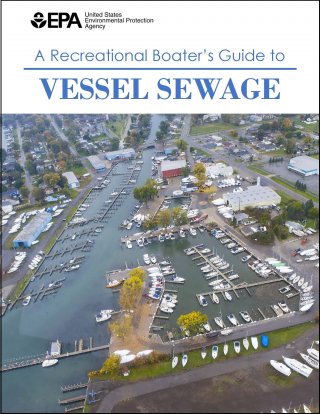Vessel Sewage Discharges
Discharges of sewage into our water bodies can come from many sources, including wastewater treatment facilities, runoff from livestock operations, and vessels. The types of pollutants present in sewage discharges include:
- nutrients

- metals
- solids
- toxics
- endocrine disrupters
- pathogens
These discharges have the potential to impair water quality, adversely affect aquatic environments and increase risks to human health. While sewage discharges have potentially wide-ranging impacts on all aquatic environments, the impacts may be especially problematic in marinas, slow-moving rivers, lakes and other bodies of water with low-flushing rates.
Section 312 of the Clean Water Act (10 pp, 170 K, About PDF) sets out the principal framework for domestically regulating sewage discharges from vessels and is implemented jointly by the U.S. Environmental Protection Agency (EPA) and the U.S. Coast Guard. “Sewage” is defined under the Clean Water Act as “human body wastes and the waste from toilets and other receptacles intended to receive or retain body wastes,” and includes graywater discharges from commercial vessels (as defined at 33 U.S.C. 1322(a)(10)(10 pp, 170 K, About PDF)) operating on the Great Lakes. Under section 312 of the Clean Water Act, vessel sewage is generally controlled in two ways. The EPA regulates the equipment that treats or holds the sewage (marine sanitation devices) and establishes areas in which the discharge of sewage from vessels is not allowed (no-discharge zones).

More detailed information on vessel sewage regulations can be found at the links below. Recreational boaters should also check out “A Recreational Boater’s Guide to Vessel Sewage,” a short guide that explains the basics of federal vessel sewage regulations and how to comply, as well as provides recommended best management practices to help keep our waters clean.
